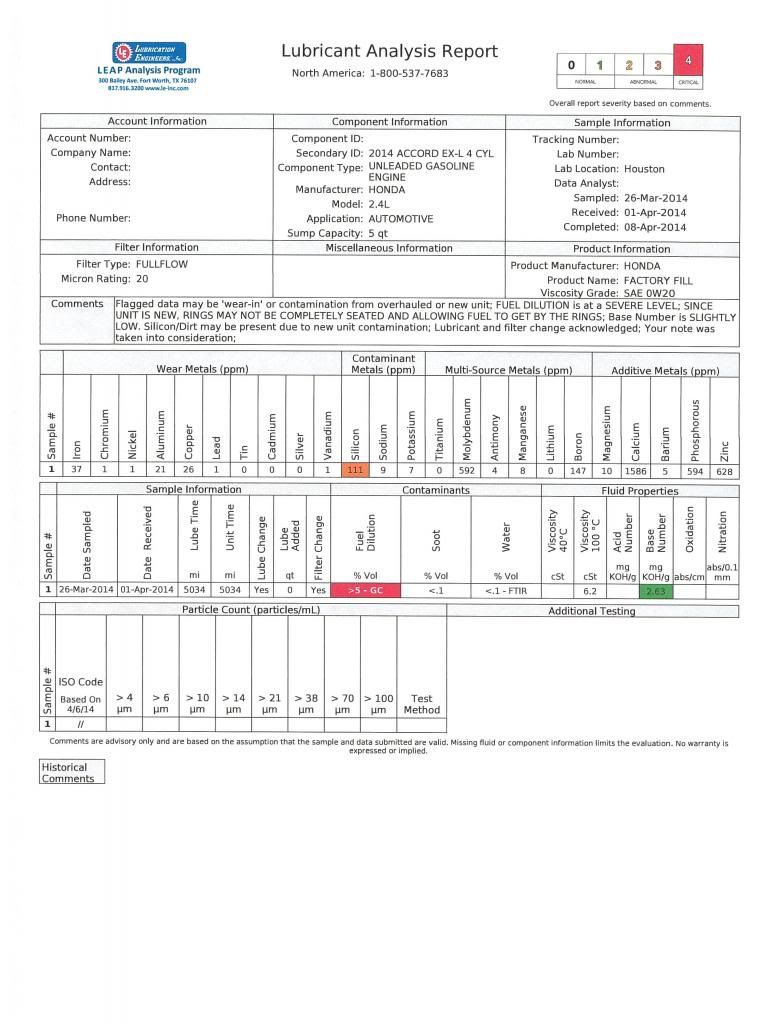We purchased this Accord on 12/31/2013 - I had heard & read that Honda FF were Moly heavy and this was. It almost killed me to not dump this after 1k miles but after 5034 I dumped the FF (did not reset Maint minder 50%) and will do a rinse with Valvoline Syn 0w-20 until maintenance minder is at 10% and then we will get our first free Honda dealer oil & filter change. Here is the break in analysis...if you were in doubt about fuel dilution with Direct Injection, this report just shows >5%. I sure hope it gets better, this vehicle spends about 90% of its time on the highway s I hope to see trends come down What do you think? This is my first break in/factory fill lab analysis on a new engine. All others have been done on in service vehicles. Thanks.




